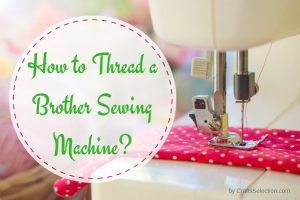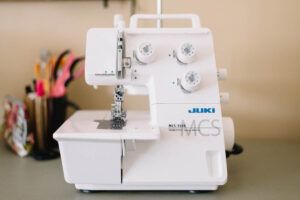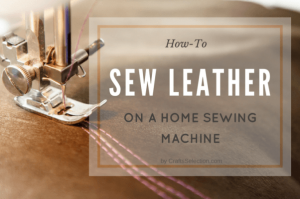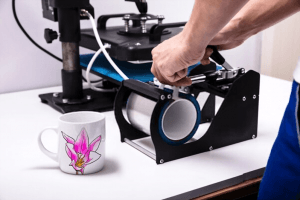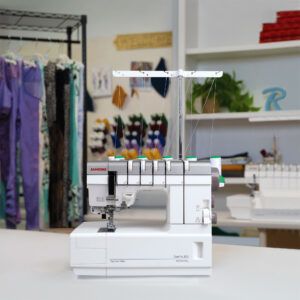I remember a time when our parents used to teach us how to hand sew our garments. “It is an integral skill,” my mom kept telling me.
How glad am I that I rarely have to use this skill anymore?
Hint: super glad.
As luck would have it, the sewing machine has saved me and others like me from having to go through hours of sewing work.
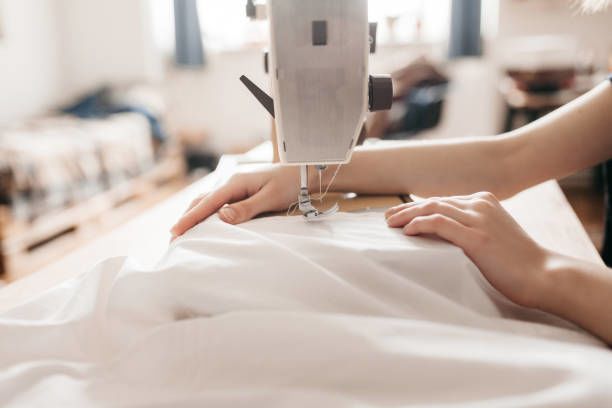
However, most of us have never even bothered to figure out how a sewing machine works. All we know is that this machine is a lifesaver and we would be hopeless without it.
Due to my curious nature, I have recently sought to find out the secret behind this magic machine. Well, it turns out there isn’t any magic involved; just simple mechanics. Allow me to explain the workings of the sewing machine.
So, How Does a Sewing Machine Work?
Unlike hand sewing, sewing machines don’t rely on the use of the running stitch. Instead, they use what is known as the lock stitch.
This stitch is made using two threads; the needle thread and the bobbin one. As its name suggests, the lock stitch involves the two threads locking into each other.
However, before I take you through the details of how stitching actually happens, you should know that the sewing machine depends on three important mechanisms for proper functionality. These are:
1. The Needle Mechanism
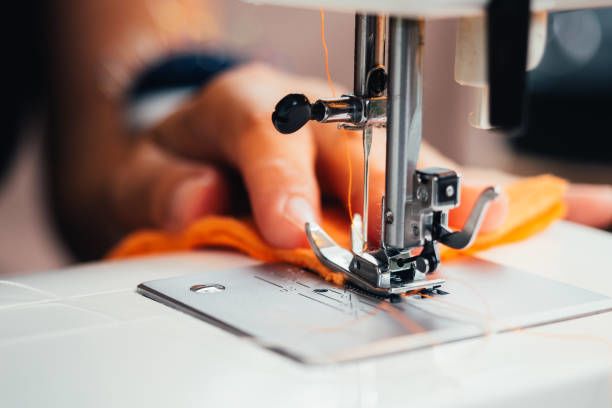

This mechanism is really easy to understand. It involves a shaft, motor, crankshaft, wheel and, (drumrolls please) a needle.
The wheel is connected to the motor by the shaft while the crankshaft connects the wheel to the needle.
The heart of this mechanism is the motor. Usually found near the power cord, the motor needs to rotate for the sewing machine to work.
The shaft then transmits the rotary motion of the motor to the wheel which also begins to rotate. The crankshaft then converts the wheel’s motion into the up and down movement of the needle.
2. The Feed Dog Mechanism
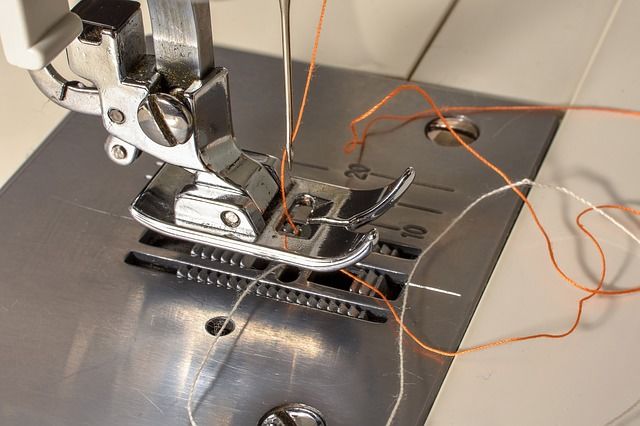

If you have read our article on the basic parts of a sewing machine, you know what a feed dog does by now. It moves the fabric forward at a steady speed for even stitch length. The question now is, “How does it do this?”
Well, it’s quite simple. It moves forward and upward simultaneously. This is made possible by two mechanisms.
Let’s talk about the first one:
Two wheels connected by a shaft rotate. This rotary movement is converted into the up and down movement of the feed dog by a crankshaft that is attached to one of the wheels on its one side, and to the feed dog on its other.
And now the second mechanism:
In the middle of the above-mentioned shaft, there is an egg-shaped wheel. The rotation of this wheel makes a lever below it move back and forth. This lever is attached to the feed dog, making it rock back and forth with it.
3. The Shuttle and Bobbin Mechanism
As I mentioned before, the bobbin thread is very important when you are stitching using a sewing machine. It is therefore important to understand how the bobbin and shuttle work.
Fortunately, the shuttle and bobbin mechanism relies on one simple principle; employing the use of gears or pulleys to make the shuttle and hook rotate faster than the needle.
How the Sewing Machine Stitches
Now that you have an understanding of the inner workings of the sewing machine, let’s get to how it actually stitches.
At this point, you might be wondering, “Doesn’t the needle simply move up and down to form stitches?”
Let’s just say it’s a little bit more complicated than that. So that we don’t leave anyone behind, we will break down the stitching process into 6 steps. These are:
- As the needle moves towards the fabric, it takes a length of thread with it.
- When it plunges into the fabric, the thread goes with it. At the same time, the shuttle is rotating and approaches the needle thread.
- As the needle rises, it leaves a loop of thread through which the shuttle hook passes and snags on.
- The shuttle hook then drags the needle thread around it so that it locks around the bobbin thread.
- Finally, the continued upward movement of the needle pulls the needle thread off the shuttle hook. The needle and bobbin threads are securely locked together and as the needle continues to rise, the formed stitch becomes tighter.
- This process is repeated over and over again to produce more stitches
What about Modern Computerized Sewing Machines?
What we have described so far is how a conventional sewing machine works.
However, we all know that in this digital era, sewing machines have greatly advanced. If thousands of positive computerized sewing machine reviews are anything to go by, most people now use computerized machines.



These machines come with a bunch of fancy additional features. One feature that I felt was important to mention is the ability to create different types of stitches and complex designs.
In spite of such advancements, the underlying working principles are pretty much the same.
The Bottom Line
As you can see, although a sewing machine is made of several elaborate parts, its working mechanism isn’t that complicated.
By understanding how our sewing machines work, it will now become easier to pinpoint what is wrong with them when they don’t work as expected.
So, was it worth it figuring out how a sewing machine works? Do you have any other questions, or do you simply want to share something you learned? If so, feel free to leave a comment below.
Also, feel free to share this article on social media. Remember, sharing is caring.
